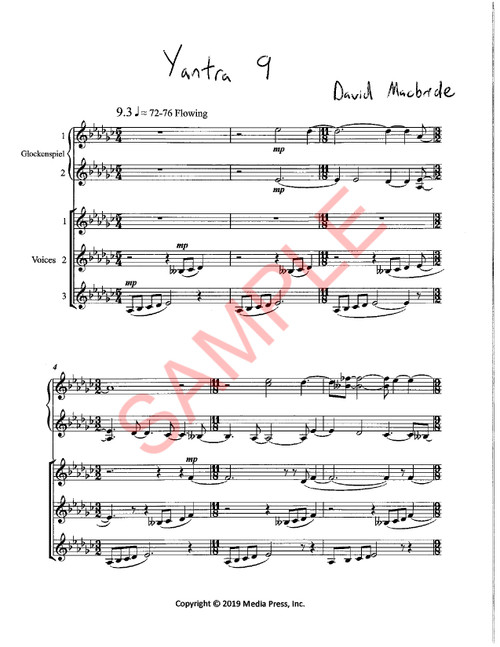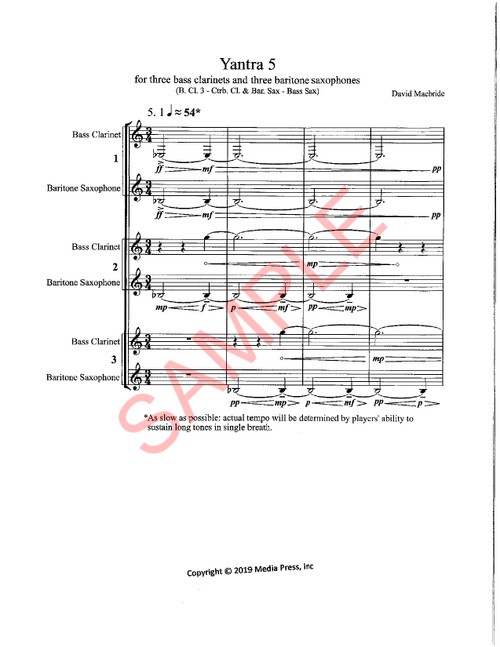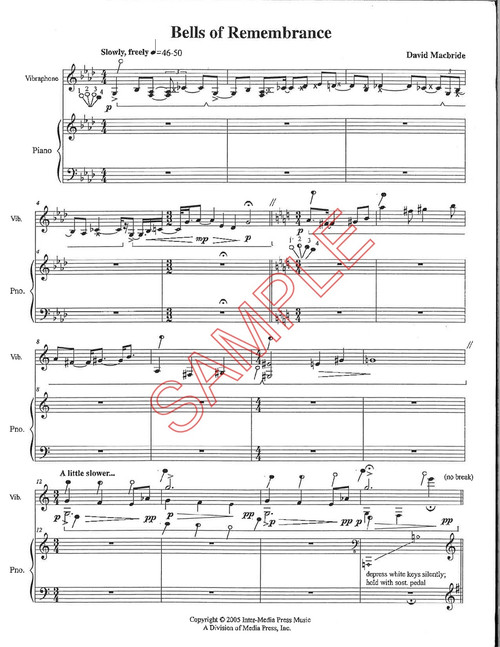Includes scores.
Want it now? Click here to purchase a digital copy of this product.
Review from Percussive Notes (2021):
Yantra 9
David Macbride
It is a unique experience to collaborate with vocalists. Their approach to music is so vastly different from ours simply because of the nature of the instruments we play. For the voice, priority is set on the flow and character of the melody, whereas percussionists tend to emphasize the mathematical correctness of rhythms, sometimes at the sacrifice of musical phrasing. Neither is the superior instrument; eventually these lessons are learned by all musicians, but it is interesting to compose a work for two disciplines that learn music from the opposite ends of a spectrum. It is especially interesting to see such a piece where aforementioned roles are reversed: the glockenspiel players have more freedom and the vocalists require accuracy of complex rhythmic passages. Enter “Yantra 9.”
In this piece, the percussionists are in an accompaniment role, while the vocalists are the primary interest. During the beginning of the three-minute work, the voices sing a sequence of short gestures as individuals: each singer having their own turn with their line. Gradually, however, using such complex meter changes as 11/8 and 7/8, these gestures gradually get closer together until they are sung on top of one another, creating a thicker texture of sonorities. While all of this is happening, the glockenspiels are playing very specifically placed attacks (no melodies) to add to the harmonic creations the singers are initiating. This is the most difficult portion of the piece because it is meant to sound incredibly free, and its notated freedom looks incredibly complicated in print.
The remainder of the work is much more straightforward. It stays in common time for the most part, and the bell players are not given many specific rhythms — rather, a general spatial guide as to where the given pitches should be placed. The singers continue short gestures that gradually come together, only now in a more orderly fashion. The piece ends with the three voices singing a harmonic passage together as a trio, not as individuals.
It is beneficial for percussionists to work with vocalists. We learn so much from one another simply through the different approaches to our craft. Due to the short length and limited personnel, “Yantra 9” is a perfect vehicle for such an opportunity.
—Kyle Cherwinski








